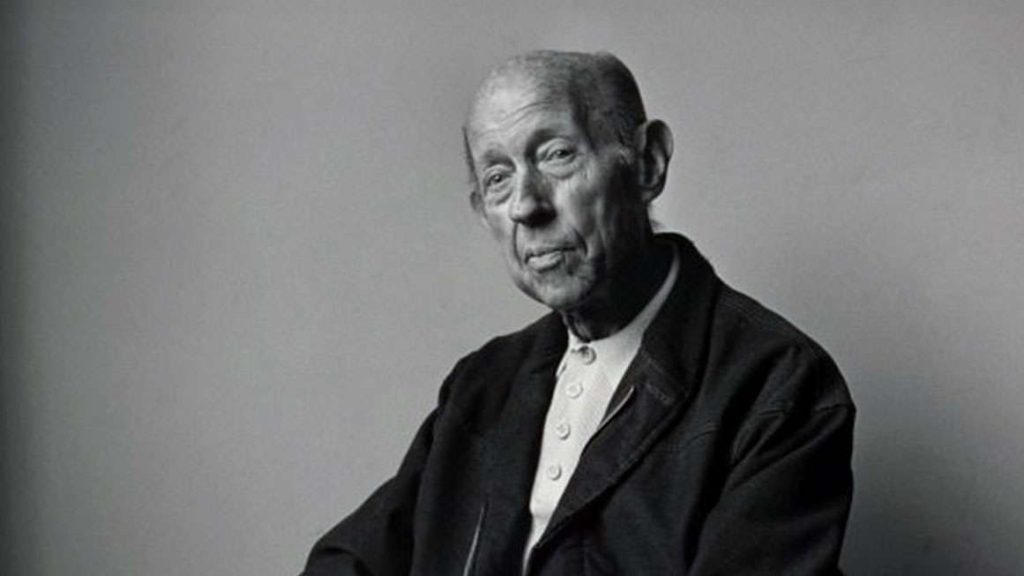One winter night in 1924, a 19-year-old named Dorr Legg snuck away to a “charming park,” where he had his first sexual experience with another man, something he had been desiring—and studying—for several years.
Born in a large home overlooking the campus of the University of Michigan in Ann Arbor, Legg came from a long line of Republicans: His family had been active in the GOP since its first convention in their state in 1854. Like many Midwestern Republicans, his father deplored Wall Street and the fat-cat bankers of the Northeast, even if they largely belonged to his political party; he taught his son that prosperity grew out of self-reliance and individual endeavor, not collusion and backroom deal-making. As for the Democrats, his father added, they ran corrupt machines in the big northern cities and used violence and intimidation to deny blacks their rights down south.
An autodidact from a young age, Legg had been spending time hidden away in the University of Michigan’s library stacks, secretly reading everything he could find on homosexuality in books of medicine, psychiatry, criminology, witchcraft, and Sigmund Freud. The readings showed Legg that he was not alone. They also convinced him that he was the expert on his own condition. When medical doctors deemed homosexuals sick and religious leaders called them sinners, Legg shrugged it off.
But the law, which counted homosexuals as criminals, was another matter: The threat of arrest and imprisonment required that homosexuals live a double life. Sometimes haughty, always self-assured, Legg resented the fact that he couldn’t live freely as he pleased. As Legg faced arrest by the police and harassment by the FBI through the years, his general Republican leanings hardened into what one historian called an impassioned “libertarian distrust of government.” The government, he believed, was the homosexual’s enemy.
***
In 1928, Legg moved to New York City. He’d just finished a master’s degree in landscape architecture, and he arrived just in time for the tail end of the city’s boom. The Great Depression meant his design work disappeared, so Legg then found employment with the new public urban planning projects in the city and on Long Island. But the Republican in him could never bring himself to support the New Deal, even if it had kept him above water.
New York was an electrifying place for homosexuals in the 1930s, and Legg dove right in. He met like-minded men at Child’s, a restaurant underneath the Paramount Theater that served as a boisterous and freewheeling homosexual hangout. Even in the relative freedom New York afforded, he kept tight control of himself, always dressing in a conservative suit and tie and maintaining a masculine manner. Legg had little patience for the effeminate and flamboyant “queens” who were part of New York’s gay underworld. He wouldn’t “send up flares,” as he described the way some men signaled to each other, and he detested the “unseemly whoops” some groups of homosexuals brashly made as they paraded down the streets. He worried that their shenanigans and gender-subversive behaviors risked detection by law enforcement.
Those concerns didn’t keep him from attending a handful of drag balls in Harlem, where he met several black friends and lovers. Their accounts of the prejudice and discrimination they experienced gave Legg new insight into his own condition. “I too was a member of a stigmatized group,” he realized.
Legg’s careful self-presentation was not enough to keep the eyes of the law off him. When he returned to Michigan in the mid-1940s to care for his ailing father and manage the family business, his public outings with attractive black men drew police attention. The Detroit cops began surveilling Legg, and they finally arrested him on a charge of “gross indecency” two years after Legg’s father died in 1947. Legg the libertarian was outraged that the police would spy on a law-abiding citizen and was furious that the government would interfere in his private life. “Did not the ‘Don’t tread on me,’ of the rattlesnake flag,” he fumed, “mean anything anymore?”
When the news of his arrest got out, Legg’s church suspended him and his landlord threatened to kick him out. Legg didn’t wait around to see what else was coming. He packed his bags for Los Angeles, joining hundreds of thousands of Americans who had been moving into Southern California for the previous two decades, drawn by its cheap land and plentiful jobs. Like many of his fellow transplants, Legg looked to California as a place where rugged individualism could flourish. He hoped Los Angeles’ tolerant and relaxed reputation meant he would be left alone—by the cops, anyway.
After 1945, L.A.’s already large homosexual population ballooned as thousands of returning gay servicemen and women decided to stay in their port of entry, just as others did farther north in San Francisco. Yet Los Angeles’ gay boom coincided with the federal government’s crackdown on homosexuals, and Legg soon found that Los Angeles wasn’t all that different from Detroit. Nowhere was in the 1950s. L.A.’s new chief of police, “Wild Bill” Parker, directed his department to “clean up” the city’s bustling streets. The police department’s head criminal psychiatrist provided medical justification for rounding up homosexuals: They were pathological degenerates, he argued, who preyed on anyone, especially children. Los Angeles’ police department quickly racked up a list of 10,000 “sex offenders,” made up almost entirely of the homosexual men and women who had been arrested during raids of gay bars and public parks or even while just walking down the street. L.A.’s politicians joined in the attack, passing laws meant to shut down the bars, restaurants, and other establishments where homosexuals gathered.
California’s Supreme Court would strike down several of the laws—on the grounds that the businesses should be able to operate, not as an endorsement of homosexuals’ right to congregate. Either way, the city’s robust anti-gay regime had its intended chilling effect, driving gay men and women even further underground.
On the federal level, both major political parties increased the government’s power to target homosexuals. In 1950, Harry Truman’s Democratic administration began rooting out suspected homosexuals from the federal government. Three years later, Republicans upped the ante: President Dwight D. Eisenhower issued Executive Order 10450, which banned homosexuals from working in the federal government, officially codifying the witch hunt into law.
Yet even in this oppressive era, a handful of homosexuals began planting seeds of resistance that would eventually grow into gay liberation. They called their cause the “homophile movement,” a term consciously chosen to emphasize the “love of fellow man”; they felt that society used “homosexual” to focus attention on the sexual acts it condemned. These leaders of the early homophile movement came from assorted walks of life and held political philosophies that ranged from libertarianism to communism.
***
A year after arriving in L.A., where he continued to work as a landscape architect, Legg joined Merton Bird, a black accountant, in creating the Knights of the Clock, an organization that provided counseling, social service support, and legal aid to interracial gay couples. Around the same time, Legg became one of the first members of the Mattachine Society, widely considered the first homophile organization in the United States.
Founded by Harry Hay, a labor activist and Communist Party member who had grown up in a wealthy, conservative Republican family, the Mattachine Society operated as a homosexual secret society modeled on the Communist Party’s cell structure, a system that organized members into small groups that remained separated to minimize the risk of a police raid blowing the lid off the whole clandestine operation. Everyone also used made-up names. Legg had no use for Mattachine’s Communist leadership—he “found Marxism completely absurd, a ponderously silly utopianism”—but he didn’t think it was worth worrying too much about. As it grew, the group soon had more non-Communists than reds, including a number who identified as conservative or libertarian, such as Dale Jennings, a young writer from Colorado.
Mattachine meetings focused on discussing homosexuals’ civil rights. Not everyone wanted just to talk. In October 1952, Legg hosted a Mattachine meeting at his apartment. The night’s guest speaker was a former member of the Los Angeles Police Department vice squad who had recently quit his job in protest over the underhanded tactics his unit used to lure homosexuals into arrest. The strategies, he explained, included hiring especially handsome men, often aspiring Hollywood actors, to entrap homosexuals in parks, public restrooms, and bars. For most of the 75 men and women in attendance, including Legg, nothing about the officer’s talk came as a surprise. Earlier that year, Jennings had been arrested after trying to ignore a suspicious man trailing him on his walk home who then forced his way into Jennings’ apartment. There, even as Jennings continued to resist his advances, the man shoved Jennings’ hands down his pants before flashing him his police badge. Even in their homes, homosexuals couldn’t find sanctuary from the law.
Still, it was something else to hear straight from the horse’s mouth how coordinated and even corrupt the police were in their efforts to incriminate homosexuals. The normally civilized Mattachine discussion group turned into a yelling match, all the pent-up frustrations and anger erupting into cacophony. No one could hear a word at first. Eventually, it became clear that half of the attendees wanted to keep talking about what they had just learned and the rest wanted to do something about it. This second group, led by Legg and Jennings, moved to Legg’s kitchen. They were joined by Martin Block, a New Yorker who owned a local bookstore and who had already been close to his breaking point with the Mattachine Society for “each and every one of their Communist enthusiasms.” The time finally felt right for a split.
Someone proposed forming a separate organization. Someone else proposed starting a magazine. They opted to do both.
They called the new organization ONE, Inc. The name had been inspired by a quotation from the philosopher Thomas Carlyle: “A mystic bond of brotherhood makes all men one.” The “Inc.” denoted their registration as a corporation, but it was also a deliberate move to signal that the group had no connections to communism. ONE would go on to host lectures and discussion groups and to fund research studies on homosexuality. It launched ONE Magazine in January 1953, three months after the group’s founding. The magazine was the very first publication in the United States devoted to positive coverage of homosexuality.
Legg quit his lucrative career to work full time as ONE Magazine‘s business manager and assistant editor. The job paid a paltry $25 a week, but he felt compelled by this new mission. “The simple truth,” he wrote, “was that my profession no longer came first. The minority with which I was increasingly identifying myself was rapidly acquiring the nature of an imperative obligation.”
Legg approached his work with the entrepreneurial spirit his father had instilled in him. He drove all over Los Angeles selling the magazine to newsstands and traveled to homophile groups around the West Coast to promote the publication. Within a year, ONE Magazine had more than 5,000 subscribers around the country—and a much larger readership, as the copies got quietly passed around.
On the masthead, Legg went by William Lambert. It wasn’t exactly a pseudonym: more a variation of his full name, William Dorr Lambert Legg. Under other bylines—Marvin Cutler, Hollister Barnes, W. G. Hamilton, Valentine Richardson, Sidney Rothman—Legg penned articles to fill its pages. Sometimes he wrote as Wendy Lane, since the magazine couldn’t get many lesbians to write for it at first. Although Legg used pseudonyms to keep from being detected by legal authorities, the fake names had an added benefit: They kept his readers from realizing how few writers actually contributed to ONE Magazine in its early years.
The magazine debuted as the U.S. Post Office, like the FBI and local police, was clamping down on homosexuals. It tracked men who subscribed to physique magazines, where muscular male models posed wearing almost nothing. Investigators sometimes participated in pen-pal clubs, where they formed connections with men they suspected of being homosexual and then surveilled their mail to determine who in their correspondence might also be gay. Nearly two-thirds of ONE‘s subscribers shelled out an additional dollar above the annual $2 subscription price to have their copies sent in a plain, sealed envelope with nothing indicating its origins. But a homophile magazine had little chance of going undiscovered. If homosexuals weren’t protected from having vice squads barge right into their homes, there was no way their mail wasn’t going to get opened too.
The Comstock Act of 1873, still in effect, made it illegal to mail anything lascivious, lewd, or obscene, and ONE‘s coverage of homosexuality put it in constant jeopardy of being said to violate the law. The Los Angeles post office refused to mail the August 1953 issue due to its cover title: “Homosexual Marriage?”
Legg wasn’t going to let the government intimidate his magazine into silence. He hired a young lawyer, Eric Julber, who started hounding the Postal Service. After three weeks, the post office finally released the issue when the solicitor general in Washington, D.C., declared it wasn’t obscene. On the magazine’s next issue, Legg deliberately poked at the authorities with the headline “ONE Is Not Grateful.” A cover note elaborated on Legg’s anger. “Your August issue was late,” it read, “because the postal authorities in Washington and Los Angeles had it under a microscope.”
Los Angeles’ postmaster made his next move when he declared that the October 1954 issue included “obscene, lewd, lascivious, and filthy” content and ordered that all the copies be kept from distribution. Legg instructed Julber to sue. Recognizing the case would hinge on whether the magazine’s First Amendment rights had been violated, Julber asked the American Civil Liberties Union’s L.A. office for help. But the group wasn’t interested in a case involving homosexuals.
Local law enforcement regularly came to ONE‘s shabby offices in downtown Los Angeles. In 1956, the FBI showed up too. The bureau’s director, J. Edgar Hoover, was irate over an article that suggested its top officials were homosexuals. For more than a decade, rumors had swirled that Hoover was carrying on an affair with his right-hand man, Clyde Tolson. Incensed, Hoover fired off an angry note to Tolson: “We’ve got to get these bastards.” A day later, FBI agents were pounding at ONE‘s office door.
Their terrifying presence only reinforced Legg’s conviction that the government had too much power over the lives of everyone, especially homosexuals. Gathering his nerve and his unwavering belief that he didn’t have to answer to anyone, Legg ignored the agents’ questions and ordered them out. “I’m not going to give you any information,” Legg declared. “What are your names and numbers? That’s all I’m interested in.”
Meanwhile, ONE‘s court case dragged on. Initially, both a district court and a court of appeals sided with the postmaster. But the appeals ruling provided an opening when, citing an article in the confiscated October issue titled “Sappho Remembered,” it ruled the magazine was “cheap pornography calculated to promote lesbianism.” ONE‘s lawyer took this language straight to the Supreme Court, asking whether simply being a positive portrayal of homosexuality was enough to make a text obscene, and therefore not covered by the First Amendment. Up until then, the Court had never even considered a case concerning homosexuality, and it found this assertion so novel that, even without hearing oral arguments, it unanimously reversed the lower courts’ rulings.
The Supreme Court issued no written opinion, and The New York Times gave only one sentence to the case about “a magazine dealing with homosexuality.” But Legg and his colleagues knew they had won a landmark decision in ONE, Inc. v. Olesen (1958). The nation’s highest legal authority had cleared the way for ONE and the two other homophile publications, Mattachine Review and The Ladder, to freely operate—the first national victory for the fledgling movement. Legg also took pleasure in knowing that he had helped push back an overbearing, invasive government. “We took on the whole federal government for a period of four years,” Legg enthused, “and they spent big money, with top lawyers from Washington, to squash us. And they didn’t! We won.”
***
Eight months later, Legg wrote an article for ONE titled “I Am Glad I Am Homosexual.” It voiced his frustration that most homosexuals continued to see their homosexuality as inherently wrong, an attitude that led them to live secret lives of shame while accepting society’s judgments of them as sick, sinful, and criminal. While the fact that Legg had written the piece under a pseudonym indicated he still was taking steps to conceal his own identity, the article also showed he had little patience with homophile organizations who felt they “should cooperate to the fullest extent with ‘public authorities.'” Instead, Legg counted himself among the small group of “admitted homosexuals” who “are actively, resiliently proud of their homosexuality, glad for it.” These homosexuals believed they should have “the same legal and social privileges as others, no more, but also, no less.”
Although ONE, Inc. had been created as a breakaway group from the Mattachine Society, it continued to work closely with Mattachine and with the Daughters of Bilitis (DOB), a lesbian organization out of San Francisco. “We had to stand shoulder to shoulder because the movement was so small,” Legg has explained. But by 1958, the loose bonds that connected the small homophile movement were beginning to fray. The irony was that it was Legg the Republican, and not the generally more left-leaning members of the DOB and Mattachine, who insisted that homosexuals were a minority group deserving of equal standing under the law.
Legg’s view that homosexuals should be able to live free of government interference also put him in conflict with his own political party in the 1950s. Republicans in Washington, such as Wisconsin Sen. Joseph McCarthy, had become eager to root out homosexuals who worked for the government and to curtail the civil liberties of gay men and women everywhere. Legg detested McCarthy. “True conservatives,” he would say, “are libertarians. They believe in limiting the hand of government.”
Legg thought the homophile movement should spell out homosexuals’ basic civil liberties, among them the right to be free of government surveillance and discriminatory laws. He suggested that the 1961 ONE Midwinter Institute, an annual convening of the three homophile groups, could be focused on outlining a “Homosexual Bill of Rights.” Legg didn’t imagine any of this as controversial, at least not among homophile activists. Indeed, what he was advocating was an early example of the identity politics that gay liberationists would heartily embrace more than a decade later.
But in 1961, Legg’s proposal was virtually dead on arrival, because of disagreements over politics and political strategy. An early planning meeting for the conference almost fell apart when no one could agree over what words like “liberty, rights, freedom, [and] free-will” even meant, the very words that had been Legg’s guiding principles all his life. In the DOB’s magazine The Ladder, Del Martin argued that publishing a bill of rights would generate a backlash that was “likely to set the homophile movement back into oblivion” by making political demands that would never be granted. When the 1961 Midwinter Institute finally did meet, Jaye Bell, the DOB’s president, delivered a crushing blow at the banquet event. A Homosexual Bill of Rights, she told the gathering, would “be potentially an extremely dangerous act to the work which has been done and is being done to change public opinion.” Bell stressed a gradual approach of continuous education to change common perceptions about homosexuals, rather than the radical act of demanding rights. “Either these are rights we already have, or they are rights which cannot be asked, because to do so would be to demand that people have the attitudes we prescribe for them,” she argued. “One cannot demand or legislate attitudes.”
There would be no Homosexual Bill of Rights. Legg was furious, lashing out at “brain-washed” lesbians who, “by virtue of their own infrequent personal contact with the brutal realities of the denial of rights the male homosexual so continuously experiences, were but a small step ahead of heterosexuals in their comprehensions of what the problems are.”
Legg’s comments betrayed both an ignorance of and an indifference to lesbian concerns: In fact, police raided lesbian bars all the time. But lesbians didn’t usually cruise in the ways that gay men did, and that made them less vulnerable to the practices by which law enforcement regularly surveilled and entrapped homosexual men, which Legg had experienced.
An editorial likely written by Legg and Don Slater, the head editor of ONE and also a Republican, expressed dismay that the majority who had opposed the Homosexual Bill of Rights had acted as if “the lot of the homosexual is not so bad after all.” It was the view of ONE, on the other hand, that the homosexual was a “second-class citizen” who required the “safeguarding of individual liberty from [the] tyranny of the majority.”
The language of personal freedom signaled Legg’s libertarian views. His demand for action marked him as a militant. These were reinforcing rather than contradictory positions, originating together from Legg’s firm conviction that government’s powers had to be restrained in order for anyone, especially the homosexual, to have real freedom. Those politics and that temperament made him an outlier in the homophile movement.
For a decade, that hadn’t mattered much. But the fallout over the Homosexual Bill of Rights—ONE and the DOB would have little connection going forward, and things with Mattachine also grew increasingly strained—foreshadowed the alienation Legg would soon feel. In a short time, the growing successes of the New Left and the Civil Rights Movement led leaders of the DOB, Mattachine, and a new umbrella group, the East Coast Homophile Organizations, to change their tactics. The once apolitical movement became politically active, even going so far as to use public demonstrations to protest discrimination, and now spoke in the language of minority rights by the mid-1960s. From there it grew into the decidedly left-leaning gay rights movement of the 1970s.
Meanwhile, another group of gay men and lesbians started founding what they called “gay Republican clubs” to make their presence known to the GOP. In 1977, Legg became one of them, as a founding member of the Lincoln Republicans of Southern California. The group would soon rename itself the Log Cabin Club. By the mid-1980s, the Los Angeles organization would be the largest and most powerful gay Republican club in the nation. In the early 1990s, it linked up with other gay Republican groups to form the national Log Cabin Republicans organization.
Legg would grumble about the “1969ing [of] everything.” By this he meant how so many saw that year’s Stonewall Rebellion as the moment that launched the gay rights movement, failing to recognize the “twenty years before [of] a hell of a lot of hard work by hundreds and hundreds of dedicated people who put their lives and their jobs and everything else on the line.” Some of this was just the understandable response of a cantankerous man in his 70s annoyed by younger generations who didn’t know or appreciate the risks and sacrifices that had led to their moment. But it also reflected Legg’s opposition to where the gay rights movement was going as it aligned with the issues and organizations of the left.
Not that he was all that happy with where his Republican Party seemed headed either. Another group of Republicans was putting the GOP on a collision course with the likes of Legg, and with any gay Republicans who believed that their party stood for limited government, personal privacy, and the freedom to live their lives as they saw fit.
This article has been adapted from Coming Out Republican: A History of the Gay Right by permission of The University of Chicago Press.
The post The Republican Radical Who Helped Launch the Gay Rights Movement appeared first on Reason.com.







